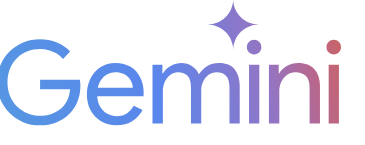Exploring the Versatility of GPT-4 API for Image Inputs
The emergence of artificial intelligence (AI) in various sectors has ushered in a new era of possibilities, especially in the realm of machine learning and image processing. OpenAI’s GPT-4 API stands out among contemporary AI technologies, offering groundbreaking capabilities that fuse text generation with image analysis. This article delves deep into the multifaceted applications of GPT-4 API for image inputs, revealing how it can transform industries and enhance user experiences.
Understanding GPT-4 API
Before diving into the specifics of image input capabilities, it’s essential to grasp what GPT-4 represents in the AI landscape. As a text-based generative model, GPT-4 excels in understanding and producing human-like text. The API extends this functionality to accommodate image inputs, enabling the model to generate contextually relevant descriptions, tags, and responses based on visual data.
Applications of GPT-4 API in Image Processing
The integration of image inputs with GPT-4 can be revolutionary across various industries. Here are some of the prominent applications:
1. Creative Industries
Artists and designers can utilize GPT-4’s image analysis capabilities for inspiration. By inputting their artworks or design drafts, they can receive descriptive feedback, thematic suggestions, or even stylistic alterations that could enhance their projects. This collaborative environment between human creativity and AI feedback can result in innovative masterpieces that blend technology with human artistry.
2. E-commerce
In the bustling world of e-commerce, businesses can leverage GPT-4 to analyze product images. The API can generate engaging product descriptions that resonate with target audiences, improving SEO and user conversion rates. Additionally, it can automate customer interactions by providing detailed answers about products based on uploaded images, streamlining the buying process.
3. Education and Training
In the educational sector, GPT-4 can facilitate interactive learning experiences. Imagine students uploading images related to their coursework—whether it be diagrams, historical photographs, or scientific illustrations. The API can then generate detailed explanations, vocabulary lists, and contextual information, enriching the learning experience and fostering deeper understanding.
4. Health and Medical Imaging
In healthcare, the integration of GPT-4 API with medical imaging holds vast potential. By processing images from X-rays, MRIs, or CT scans, the AI can assist in diagnostics by generating preliminary analysis reports. This capability not only aids medical professionals in assessing conditions swiftly but also helps patients understand their health better through simplified explanations derived from complex images.
The Technology Behind GPT-4 and Image Processing
The underlying technology of GPT-4 hinges on deep learning frameworks, massive datasets, and neural networks that simulate human-like understanding. This structure enables the model to learn the nuances of both textual and visual inputs. When an image is processed, the API identifies various characteristics and attributes, converting them into data points that can be articulated in text format.
Best Practices for Implementing GPT-4 API with Images
For businesses and developers aiming to harness the power of GPT-4 API with image inputs, adhering to best practices is crucial:
1. Quality of Input Images
Ensuring high resolution and clarity in the images submitted is paramount. The more detail the API has to work with, the better the output will be. Low-quality images can lead to inaccurate descriptions and a mismatch in context.
2. Contextual Relevance
Providing additional context alongside image uploads can significantly enhance the output. Including information about the intended use of the image or the specific questions related to it will help the API generate more relevant and useful results.
3. Iterative Feedback Mechanism
Implementing an iterative feedback loop where users can refine outputs based on the responses of the API can create a more tailored experience. Allowing users to modify or specify their requirements post-initial output can lead to a more satisfactory user interaction.
4. Ethical Considerations
With advancements in AI, ethical implications are a key consideration. Users should be aware of privacy policies when uploading sensitive images, ensuring that data is handled securely and responsibly. OpenAI provides guidelines to help navigate these complexities.
Real-World Examples of GPT-4 API in Action
Several companies and initiatives have begun to explore the capabilities of GPT-4 API with image inputs:
1. Canva
The design platform Canva integrates AI tools to assist users in generating content quickly. By allowing users to input images and receive design recommendations, Canva enhances user creativity and expedites the design process.
2. Google’s Lens
Google Lens leverages machine learning to analyze images and provide actionable information. By combining GPT-4 with its capabilities, searches can yield more descriptive results beyond simple keywords, offering a more interactive search experience.
3. Telehealth Services
Telehealth platforms are utilizing AI to process patient-uploaded images for assessments. By employing GPT-4, they can generate alerts or insights based on the images, enabling healthcare providers to make informed decisions even before consultations.
The Future of GPT-4 API and Image Inputs
As technology continues to evolve, so will the functionalities of the GPT-4 API. Future developments may promise even more sophisticated image understanding and interaction capabilities, opening doors to more immersive experiences in virtual reality (VR) and augmented reality (AR). As AI adopts deeper contextual awareness, the line between human and machine-generated content may blur, leading to a new era of creative collaboration.
Final Thoughts on GPT-4 API and Its Potential
The integration of image input capabilities in the GPT-4 API signals a significant step in the evolution of AI technologies. By harnessing this powerful tool, various industries can enhance their operations, engage users more effectively, and explore the frontiers of creativity and innovation. As we look forward, the ongoing development of artificial intelligence promises to unlock endless possibilities, all starting from simple images.
















